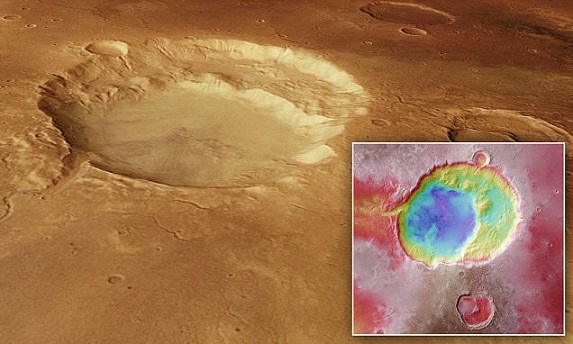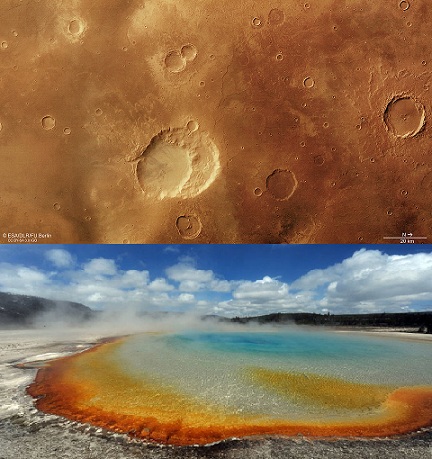| Online: | |
| Visits: | |
| Stories: |

| Story Views | |
| Now: | |
| Last Hour: | |
| Last 24 Hours: | |
| Total: | |
Mars SUPERVOLCANO spotted that could be Red Planet’s Yellowstone (+Video)

Image credit: ESA
Vast crater called Siloe Patera in the north of Mars measures 40x30km, and dips as low as 1750m
Experts believe it was caused by massive volcanic explosions more than three billion years ago
The discovery could be the red planet’s equivalent of the giant Yellowstone volcano on Earth.
At first glance, the region covered by this latest Mars Express image release appears to be pockmarked with impact craters. But the largest structure among them may hold a rather explosive secret: it could be remains of an ancient supervolcano.
The images presented here were taken by the high-resolution stereo camera on ESA’s Mars Express, and focus on the Siloe Patera feature in the Arabia Terra region of Mars.
Siloe Patera comprises two large nested craters, close to the centre of the main colour image. The outer rim measures about 40 x 30 km and, at its deepest point, the crater dips as low as 1750 m below the surrounding plains.
Some scientists believe that Siloe Patera and a number of similar features in Arabia Terra are calderas, the collapsed centres of volcanoes. But not just any volcanoes: these are thought to be martian supervolcanoes.
On Earth, a supervolcano is defined as a volcano that can produce at least 1000 cubic kilometres of volcanic materials in an eruption – thousands of times larger than ‘normal’ volcanic eruptions and powerful enough to alter global climate. An example is the Yellowstone caldera in the United States.
Read more here: http://tinyurl.com/p8pjr33
PHYSORG http://tinyurl.com/o28exhd
ESA http://tinyurl.com/knxk8ta




